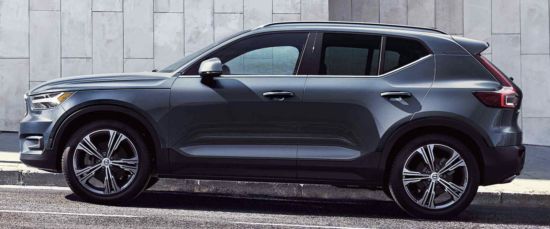One of the most hotly-awaited reveals in the vehicle world is undoubtedly that of the Volvo VC40 – the company’s first electric car. It is the electric version of the XC40 SUV, which bears a sporty design, cutting-edge technology, and a reputation for safety.
Volvo has always been famed for putting the security of its drivers and passengers first, but when the original XC40 was launched, the company called it the safest car of its type. The Euro NCAP (which conducts crash tests in Europe) certainly agreed, granting the Volvo’s family SUV the highest safety ratings ever awarded.
So far, it is anticipated that the new XC40 electric version will boast more safety features than other electric brands, though little has been revealed so far.
What the Press Knows about the Volvo XC40 Electric
Volvo has only released digital images of the new vehicle, which suggests that the car will run on two electric motors. The rear wheel also has a CCS port just above it, indicating that the new vehicle will enjoy DC rapid charging capabilities while also offering Type 2 AC charging preferred by home wall-box charging units. The difference between DC and AC chargers are insignificant for car owners. Fast AC chargers have a 43kW rating, while DC units are rated at 50kW at the very least.
Essentially, both charge vehicles up to 80% in a time frame of between half and hour and one hour. They are miles ahead of the next charger type – fast chargers, which provide power ranging from 7kw to 22kw.
Safety is Everything
Volvo’s head of safety Malin Ekholm has stated that the electric XC40 will be “one of the safest cars we have ever built.” Of course, car buffs will tell you that the brand has always been committed to safety.
Around five years ago, the company established Volvo City Safety, the umbrella terms for all of Volvo cars’ auto brake functions. Moreover, collision avoidance systems, so prevalent today, arose in 2008, when Volvo released the first car able to monitor and avoid a nose-to-tail crash.
As stated by personal injury legal firm FVF Law, these systems can help reduce the vast majority of accidents, since most are caused by driver behavior rather than environmental conditions or vehicle malfunctions. Despite the statistics, many marques still fail to include these systems in their vehicles and at least with respect to safety, Volvo continues to stay a step ahead.
Secure Driving in the Electric XC40
While not giving too much away, Ekholm stated that the new electric vehicle would contain similar safety systems to those in the current SUV and in other models. “People are inside, and the car needs to be designed safely for them,” he stated. An aluminum ‘cage’ has also been set up to protect the battery in case of a crash. The ultimate aim, say manufacturers, is to prevent the car tipping over in case of collision.
The new XC40, Volvo’s first electric vehicle, is one of October 2019’s most awaited reveals. Promising to boast a sporty, rugged design like its non-electric counterpart, it will also contain key safety features developed over the past few years. These include active safety technology and an ‘advanced driver assistance systems’ package that includes a plethora of sensors and cameras, which will one day be the basis of Volvo’s self-driving vehicles.
Let us know what you think in the Comments.




Speak Your Mind